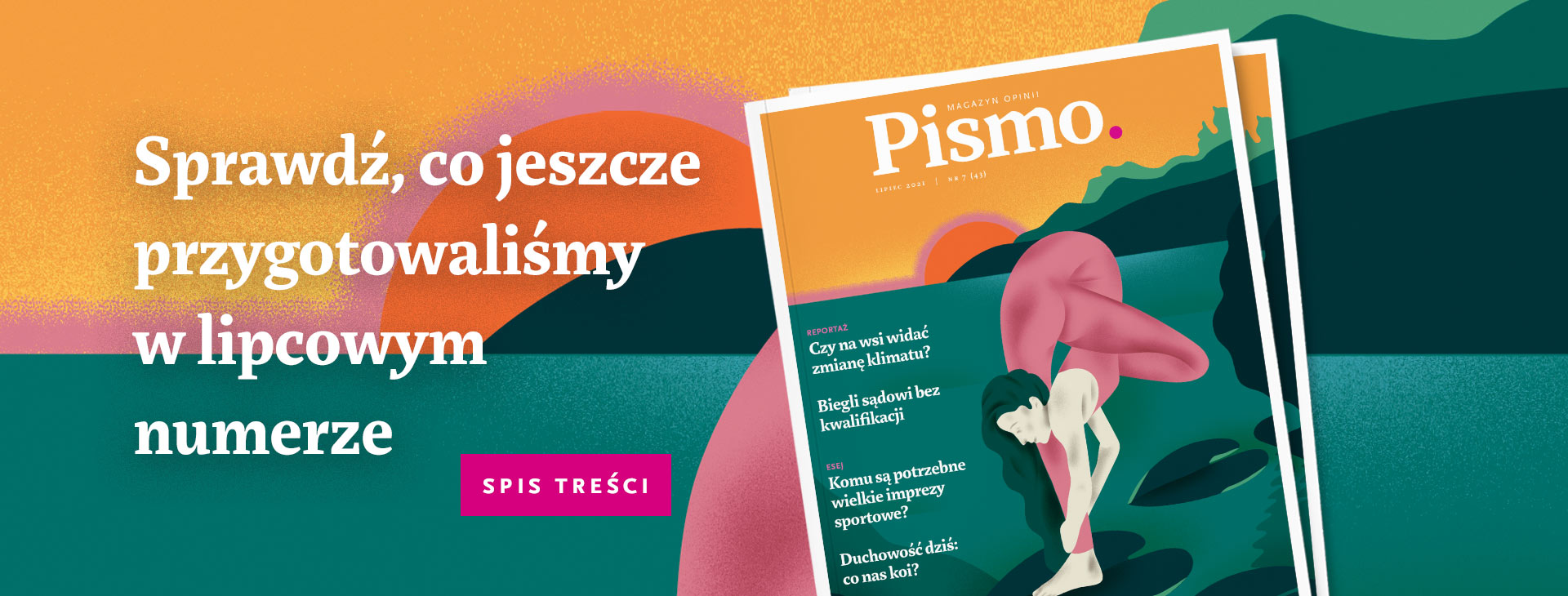Fotoreportaż
Do you know how flax blooms?
[POLISH VERSION]
– ‘This world no longer exists. The world I discovered as a little girl – with forests full of blueberries, clear water in the stream and sheaves of fresh hay from the first swath, with a whole field blue with flowers… – Wanda Szado-Kudasikowa, a poetess, squints her eyes. – I didn’t even get a chance to look back. But it’s not like it simply disappeared, we destroyed it ourselves’ she says as she cuts a cake. It’s pleasantly chilly in her large kitchen, outside is the first hot weather this Spring. Maciej Moskwa and I have been travelling through the Małopolska region for a few days now, listening to women of different ages who share the same experience of living outside the Polish cities, in the countryside. We ask them how the climate has changed. ‘Everyone is surprised that this year it’s suddenly cold in May, but it’s always been like that. At this time of the year The Tatra Mountains, which you can see when you go out on the road, have always been as snowy as they are now. The normal was then, not today. Nature was waking up at its own pace, and we were following it. And when a human follows nature step by step, they follow humbly. It’s only when they get carried away to go faster, to get more then he loses it. This is how we got lost’ she adds, and falls silent for a few minutes.
She describes herself as ‘a highlander from Mazowsze’. She was born in Płock in 1936. Both her parents were teachers before the war. At the beginning of the occupation, the Germans arrested her father and deported him to Dachau, so her mother took Wanda, the other two children, and her own younger sister and fled to the Podhale region, to her hometown. ‘I will always be grateful to the people of Suchy and Szaflary for the incredible way in which they welcomed us. They shared what they had, and they didn’t have much themselves, they hired my mother to work so that she could earn something.’

Wanda Szado-Kudasik, Nowy Targ
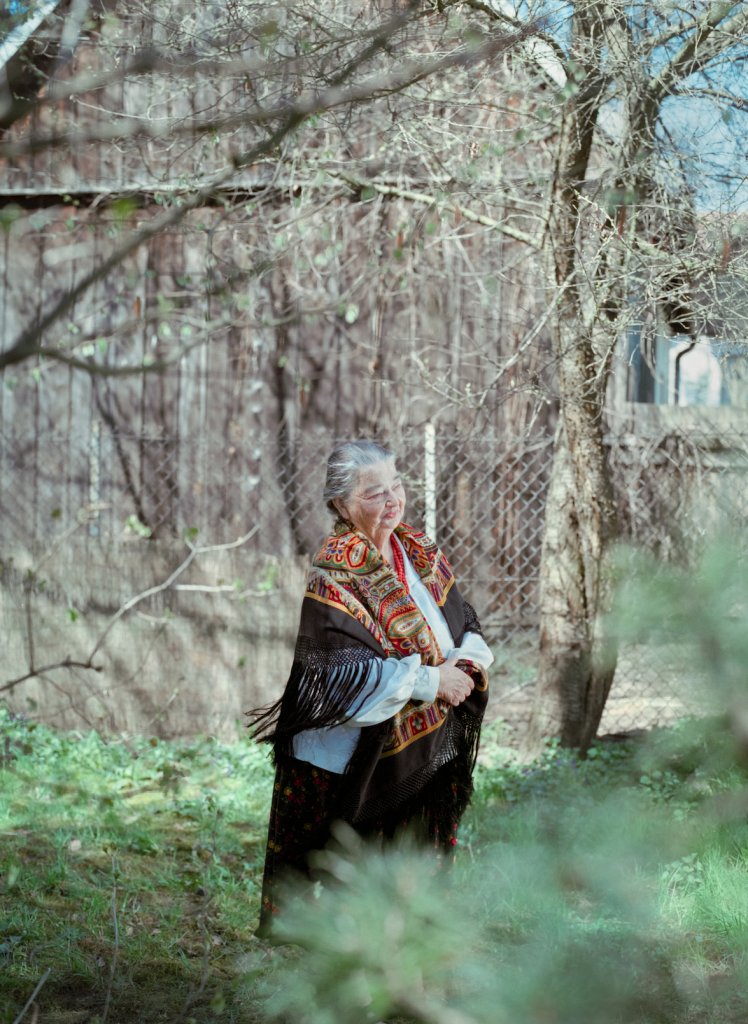
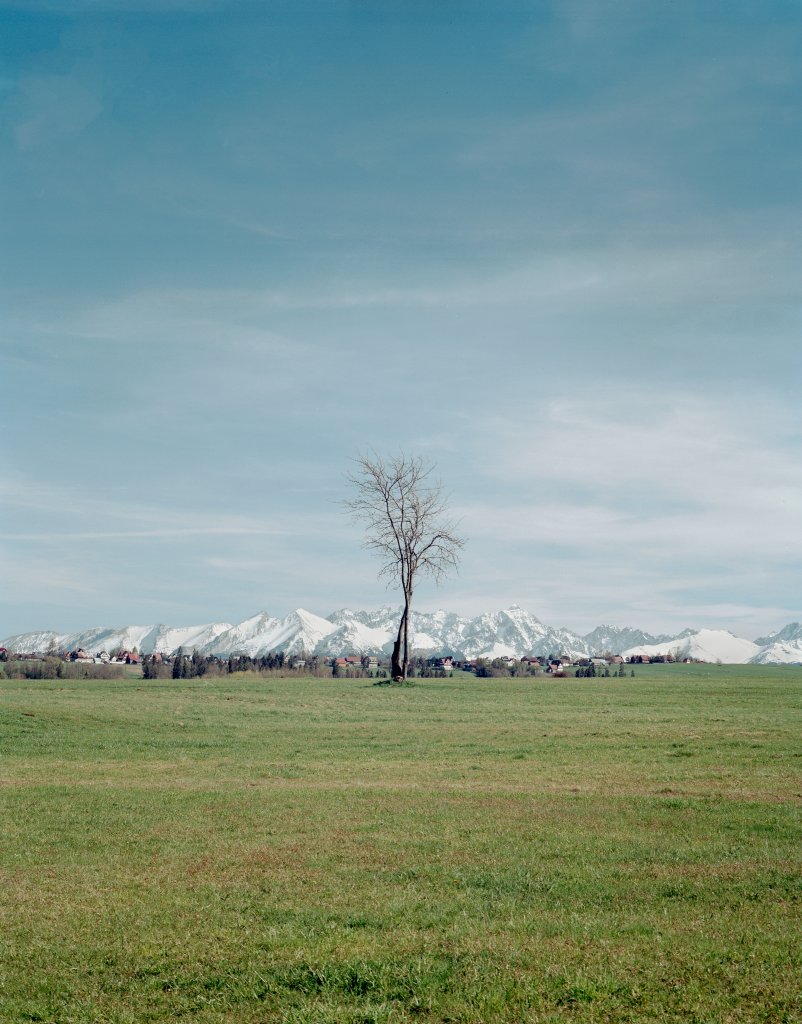
Little Wanda would then stay with her grandmother and a bunch of children from the village. ‘It is her who taught me to listen to nature, otherwise it will remind us of its presence.
‘And in 1945, in November, a miracle happened. Eight months after the liberation of the camp, my father returned. It was like a scene from a film: there was an emaciated figure standing on a bridge, whom I couldn’t recognize because I was only three years old when they took him away, but I did. „Daddy!” I hung around his neck.’

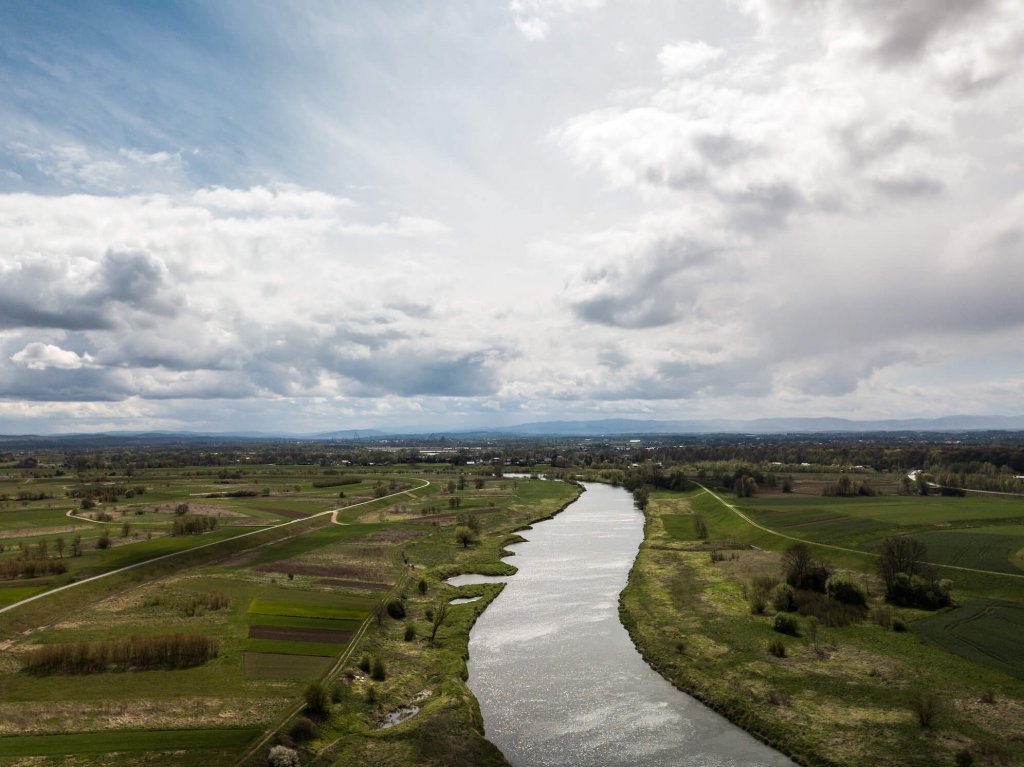
A year later the family moved to Nowy Targ. ‘I feel that I am from here. In my heart a mountain girl. It was in the mountains that I learnt concepts like goodness, work and respect for people. I also learned to respect the brook which flows nearby, because it is just as important as all the other parts of the world around us and equally necessary. My grandmother taught me what kind of vegetables we can plant in our vegetable patches, so that they would grow on our land and not wither away; what are the names of the wild bushes in the young forest; and how to tell a difference between a Swiss pine and a fir. Exactly: Swiss pine. My grandmother used to say that this is a tree with a free soul, it chooses the best place for itself. Uncompromising and strong, it will withstand the strong wind. Have you seen the one in my garden? One of the three I got from the Tatra Mountains is still standing. It is leaning but fighting.
The crooked tree in the Nowy Targ garden is only a few kilometres away from Szaflary and the lanes of the noisy Zakopianka road, on which cords of cars drive all year round in both directions. It is hard to see any traces of the villages of Szaflary, Bańska Niżna or nearby Biały Dunajec in the noise and dust, although all of them are formally villages. Over 93 percent of Poland is covered by rural areas. Their definition is broad, a village is everything that is not a city, which is why it includes both Podhale tourist resorts and populous Nawojowa (officially inhabited by more than 3,500 people), which looks like a suburb of Nowy Sącz, and Frywałd, hidden between hills with houses with less than 270 inhabitants. Mętków located close to the bank of a narrow riverbed of Vistula is considered a village, just like Brzeźnica, a typical village with houses along the main road. Places where nobody cultivates the land are called villages. According to the study Polish village 2020. Raport on the condition of the countryside from 2020 (Polska wieś 2020. Raport o stanie wsi z 2020 roku), only 22 per cent of economically active inhabitants of a village run a farm, with varying degrees of involvement in it, and only 10 per cent earn their living from it. Most of them work in a city. In the case of Małopolska, it may be one of the five most polluted cities in the country. The local villages, ten of which we visited, are not only close to large cities – Cracow metropolis and Tarnów – but also large industrial and mining establishments. Maybe this is also why they are so hard to spot between the chimneys, mine shafts and A4 lanes?
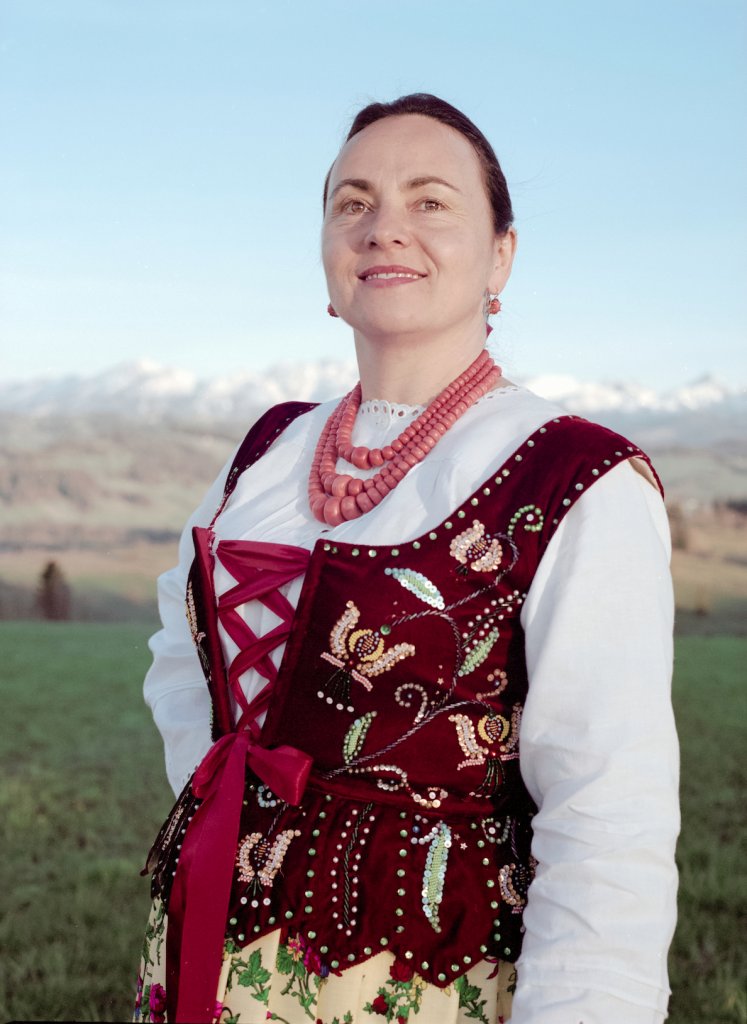
Elżbieta Porębska-Mędoń, Biały Dunajec
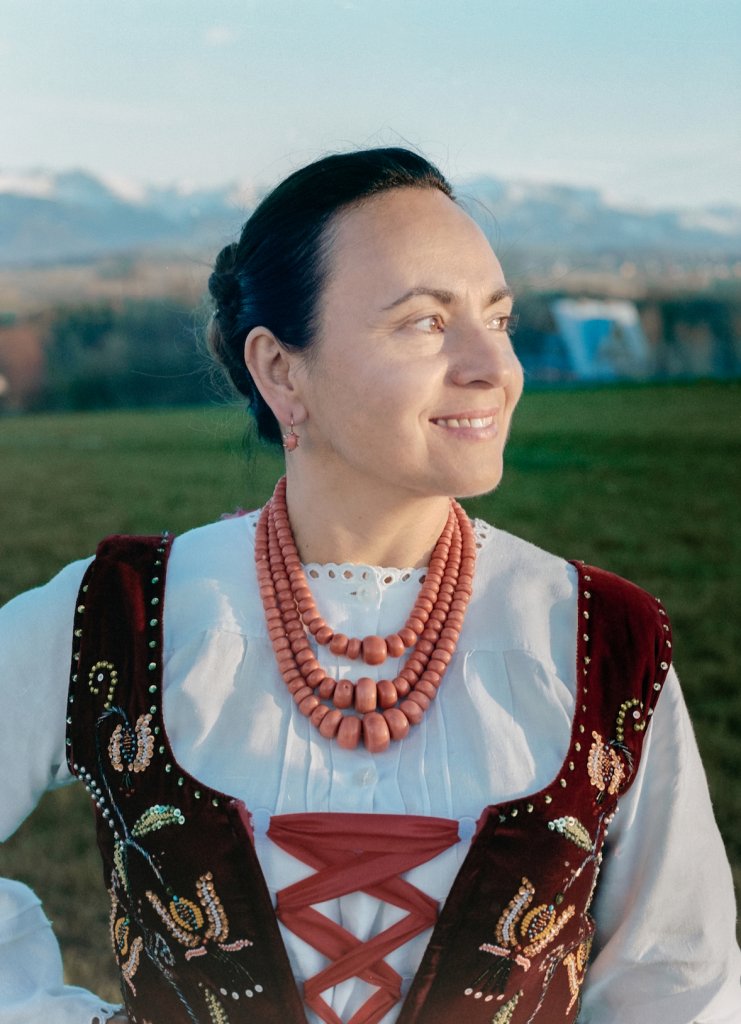

Or maybe it is because I am looking for an image that not only does not exist, but perhaps did not exist at all? For an idyll, a mythical land that is closer to utopia, an impossible place, the ‘unattainable’? This is mainly the imagination of people living in the city, an expression of longing for the simplicity in nature, sometimes a fear of modernity and its dystopian dangers. The countryside as a place where life goes on in a peaceful rhythm and in harmony with nature, far from the highway. A place where only locals who know each other live, people leading a ‘good-nature life’. There is no sign of fetor from fur farms, no huge pigsties on the horizon where pigs are gassed en masse. The land is fertile, there is not even a smell of manure, and the hen killed for the Sunday broth has not shed a single drop of blood in the farmyard. Despite the fact that such a village never existed, similar nostalgic stories are firmly rooted in our culture and are replayed over and over again, even though memories of ‘holidays in my grandma’s in the countryside’ are often replaced by a Netflix screening of Ranczo and before that Złotopolscy.
The real countryside, the one from which three quarters of Polish society originated before the war is, due to its diversity, a space without one common narrative. As anthropologist Roch Sulima wrote in his article Social images of the countryside at the turn of the 20th and 21st centuries (Społeczne wyobrażenia wsi na przełomie XX i XXI wieku): ‘symbolic images of the countryside have become blurred (…). There are no longer clear, as there used to be twenty years ago, „decorations” of folklore set on the national stage, which guarantee relative certainty in understanding the social world’. What remains of these decorations today is stretched between the memory of the impossible and what is real and tangible. For example, the case of former State Agricultural Farms (PGR) and how to deal with inequalities which, as a result of the transformation, fell on their employees, large hectare farms which win in competition with small, non-modern ones. The EU subsidies are changing the countryside, but they have not made the opportunities equal, as there is still a lack of public transport. In 2019 the Polish Economic Institute reported that more than a quarter of Polish villages have no public transport at all, and on top of that the development of infrastructure, such as water sewage, is still too slow. However, these are not all the problems. People living in the countryside also point to the climate catastrophe, the effects of which they see and fear.
This fear of the future comes suddenly. Among everyday worries and ordinary conversations, it can be overlooked, but there are moments when it overpowers.
– ‘For the first time in my life, and I have already been in the world for a while, I am worried about running out of water,’ admits Wanda Szado-Kudasikowa. – ‘And yet, without it, there is no life, we cannot print or buy more. People in other parts of the world are already running for it, leaving their homes. I am afraid that my grandchildren will also have to fight for it. I am very afraid.’
When she says this, her gentle face hardens. She grasps the ends of a large highland shawl she has on her shoulders and shakes it off, then throws it over her back again, as if she was trying to sober herself up with this gesture, as if she was trying to stop herself from becoming distraught.
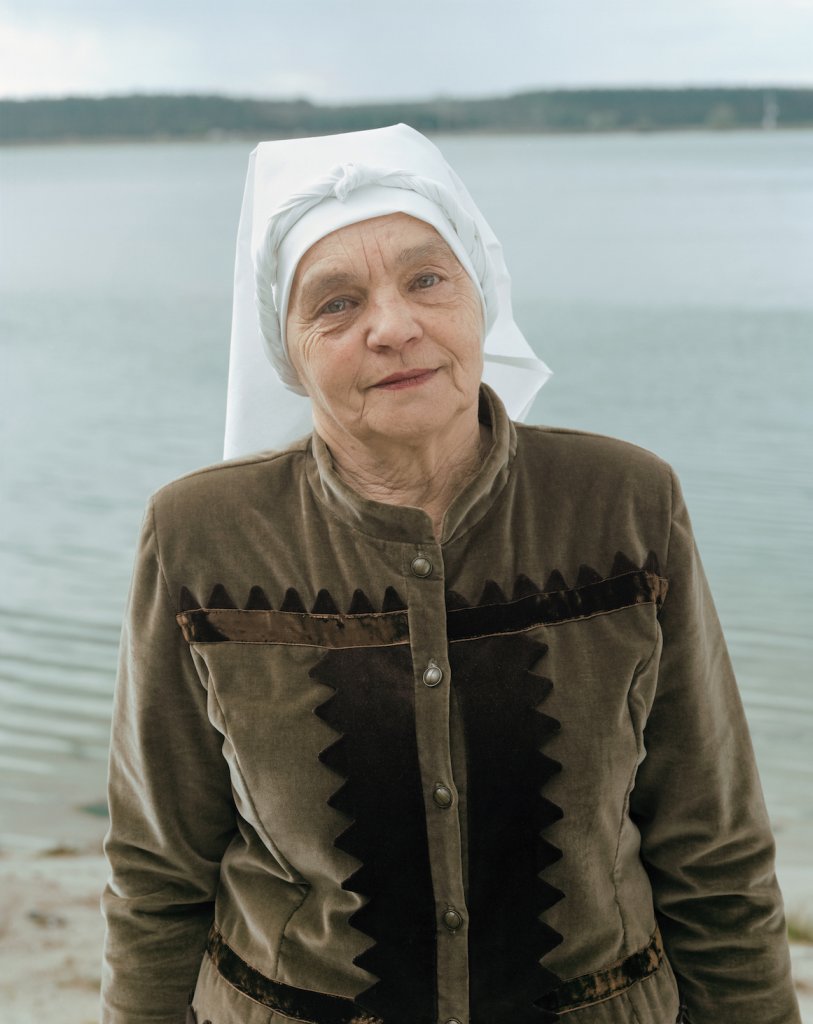
Joanna Kurtyka, Brzeźnica

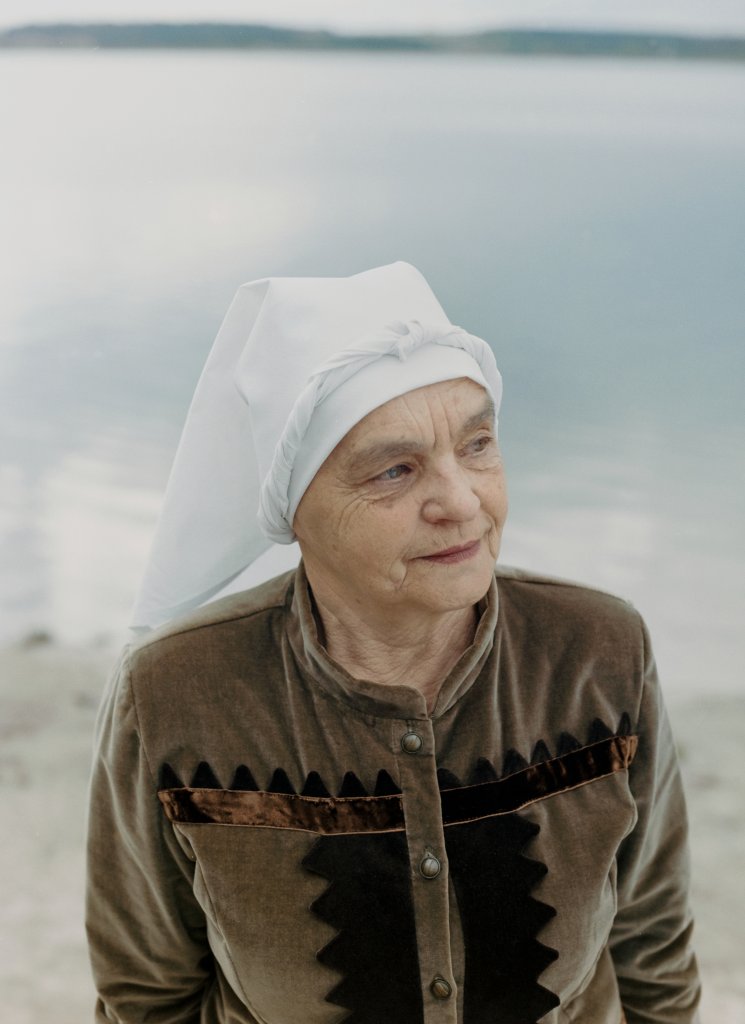
– ‘My grandchildren will not know what a snowdrift is, they will not be able to imagine snow tunnels. They do not know the words that were used to describe everyday life in the mountains, because it has changed so much that most of them have fallen out of use. Here, just behind the fence, a stream is flowing. It used to flow swiftly, but now there are years when the riverbed is completely dry’ adds Elżbieta Porębska-Mędoń, also a highlander and owner of 'Moje Tatry’ guesthouse in Biały Dunajec. While she is talking, she is simultaneously collecting dishes, giving orders in the kitchen, chasing the dog out of the dining room and checking whether new reservations appeared. Constantly on the move, she finds it difficult to sit down even for a moment.
We have heard about the falling level of groundwater in every village we have visited in Małopolska. We have heard that ‘things used to be different’ and one well served the inhabitants for years. In many farms there are containers, barrels, cisterns under the gutters to collect rainwater, but it is not fit for drinking. In others, entire farmyards are lined with concrete blocks, which do not allow water to pass through.
‘It is impossible not to combine these elements – human activity and its effects – and not to realize that we are doing this to ourselves, because we want more and more. We are taking handfuls of resources as if they were never going to end, and we do not care what comes after us,” adds Porębska-Mędoń. She runs a guesthouse because her family has been hosting tourists for generations. In the large room, one wall is entirely decorated by an enlarged, pre-war photograph showing her grandmother among several people sitting on a cart. They are going to Morskie Oko, dressed up for a celebration.
Neither Paweł Gut-Mostowy, the doyen of the family, nor his wife Wiktoria, née Chowaniec, Elżbieta’s great-grandparents are present in the photograph. At the beginning of the 20th century, they already ran a ‘hotel and restaurant’ in Poronin, which was visited by artists from the ‘Young Poland’ movement. According to the family legend, Jan Kasprowicz described Victoria’s stubbornness and strength in one of his poems. ‘I think that it is thanks to spending time with such free and creative guests that my ancestors became open to otherness, curious about it’, says Porębska-Mędoń.
She worries whether tourists will have a reason to come to Podhale in the future. ‘They are looking for fresh air, but there are problems with that. As soon as it gets cold and people start heating in their stoves, it is impossible to breathe. The smog appears. Even now, although it is May, when it gets colder, there is dark, biting smoke coming from many chimneys. And yet this is the most valuable thing we have, for the people who come here, but also for ourselves. After all, we poison ourselves first. The tourist may go somewhere else, but we will stay.’
She invested in geothermal energy thirty years ago. ‘In Podhale we have this possibility, but I know that not many have gone down this road. Nobody is encouraging people to do it or investing in it, and yet it would be the solution to a large part of our air problems here in the Tatras. It is not happening, and I find it hard to understand. Besides, for some people burning coal and rubbish is the easiest and cheapest thing to do.’
‘It is so easy to say: ‘change the stove’, ‘don’t use coal’, or: ‘the septic tank is outdated!’. If you have always had sewerage, hot water in the tap because it is heated by the heating system, and radiators all over your house warmed up during winter, you do not even think about the fact that others would like to do the same but can’t. It is not that ‘they don’t want to’, ‘they cannot!’, says Joanna Kurtyka from Brzeźnica, a small village in which, as she says, ‘there are no longer any cows’. She is a member of the local Landladies’ Circle (Koło Gospodyń Wiejskich) and the president of the Association of the Development of Brzeźnica Village. The village is surrounded by gravel pits and artificial lakes in the shade of azure, where the inhabitants relax and prepare food on warm afternoons. Most of them go to work every day in nearby Tarnów. ‘A patronising view on the people from the countryside certainly does not help in solving our problems. Lack of access to these basic goods is still one of them’ adds Kurtyka.
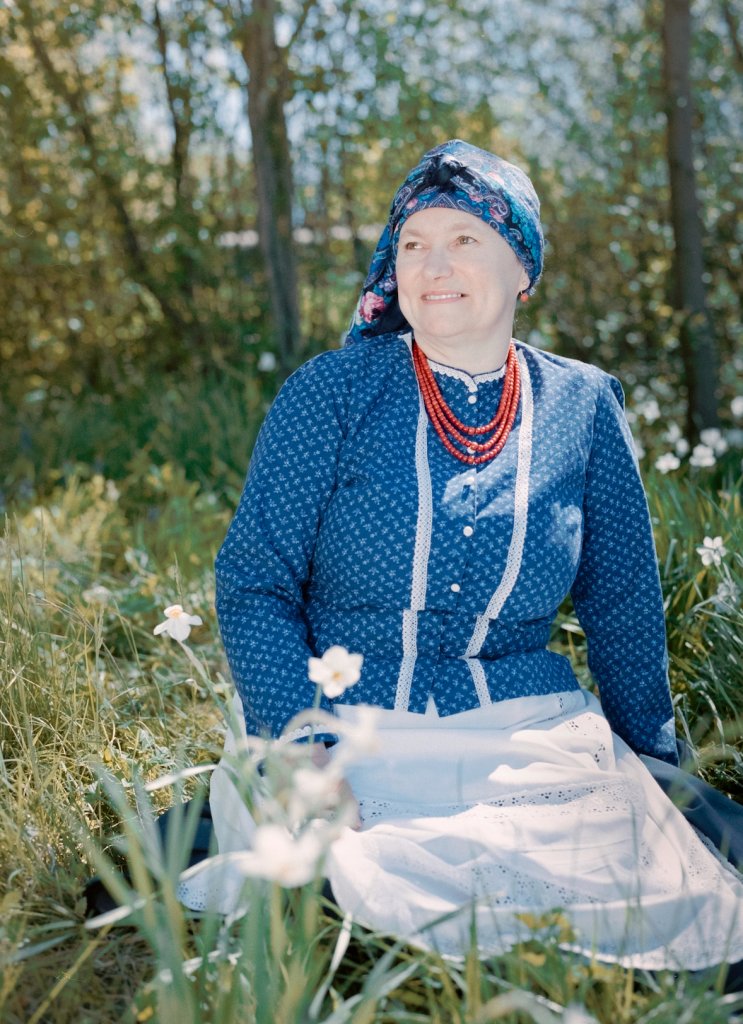
Małgorzata Matug, Zalasowa
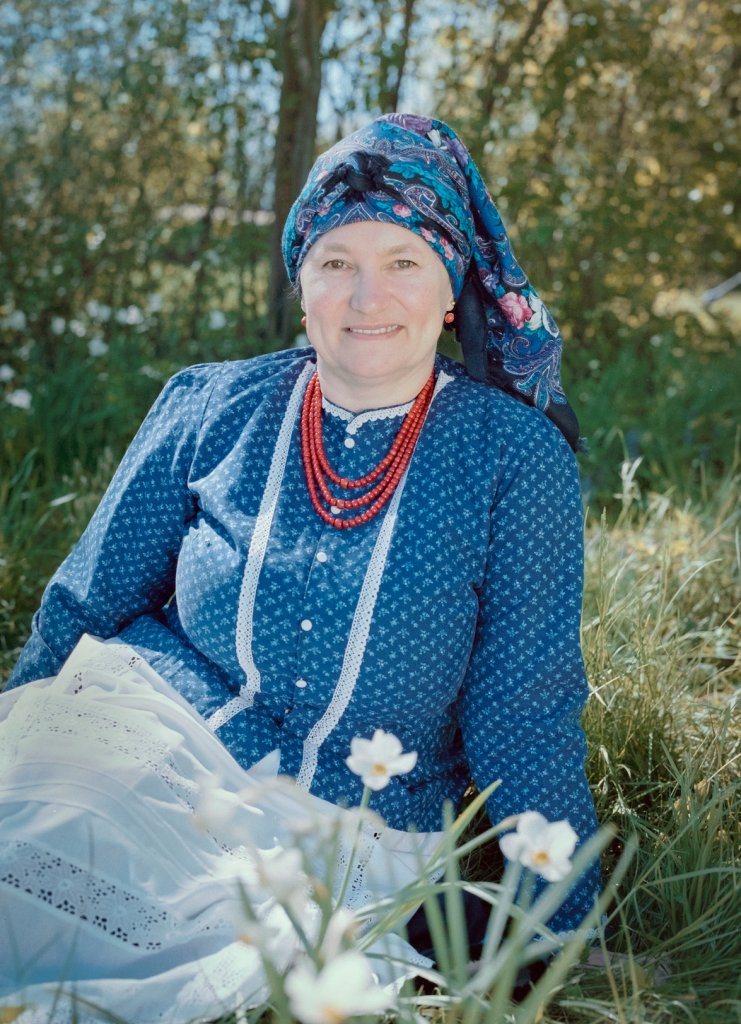

By the end of 2018, 60 per cent of the Polish countryside was covered by a sewerage network, but only 40 per cent of residential buildings were included. Many villages are too small in order for it to be viable. Just thirteen years ago, a quarter of rural homes did not have a bathroom; in 2018, only 17 per cent of homes still did not have it. There aren’t enough sewage treatment plants to meet the demand either. According to figures from three years ago 42.9 per cent of the population living in rural areas used them.
‘It is the same with heating. We are a multi-generational family; my children and grandchildren are living at home. We could afford to replace our stove with a low-carbon one and install photovoltaics. But these are not costs that everyone in the countryside can meet. I would even say that only a few can afford it.’
In January 2017, Małopolskie Voivodeship was the first one in Poland to adopt a so-called anti-smog resolution covering the entire voivodeship. According to the resolution, from 1 July 2017 it is not allowed to: use coal and wood even in new boilers or in high-emission fireplaces (the parameters are defined by EU regulations) and burn unseasoned (i.e. dried for less than two seasons) wood or biomass. The year 2022 has also been set as the year by the end of which a non-compliant boiler (the so-called „kopciuch”) must be finally liquidated. The resolution is binding for everyone and non-compliance is punishable by a fine [Juliusz Ćwieluch wrote about it in the 2/2019 issue of ‘Pismo’ – editor’s note]. Old stoves can be replaced with a subsidy amounting even to several dozen thousand zlotys under the government programme ‘Clean Air’.
Joanna Kurtyka: ‘For many, however, this support is only theoretical – an own contribution is necessary, and the total cost of replacing the old stove and installation may amount even to several dozen thousand zloty. Besides, people in the countryside do not mention that gas, for which many households are switching, is also a fossil fuel, and soon it will also be abandoned. Electric heating is very expensive and for photovoltaics you also need to spend money first and then have someone to sell the electricity to if there is too much of it, and it is not at all obvious that a buyer will appear. All this requires something that the countryside has lacked for a long time and that hardly anyone talks about – infrastructure.’
‘The lack of water supply, sewage or waste collection systems is to some extent a result of the dispersed nature of Polish villages. Connecting individual houses or separate villages to the network is a logistical challenge, and for local authorities also a financial one. However, we are living in the year 2021, so it would seem that this is not unattainable. Besides, it is also a question of planning, of thinking about us at these highest administrative levels. The best example is probably transport. People complain that some drive old cars and that they produce a lot of smoke. But what are they supposed to drive if the state connections have been cancelled and a private bus will sometimes appear and sometimes it won’t?’ asks Joanna Kurtyka.
And then she adds: ‘But it is also true that we do not take care of what is ours and what is our influence. After all, it is not Martians who throw this rubbish into our ditches.’
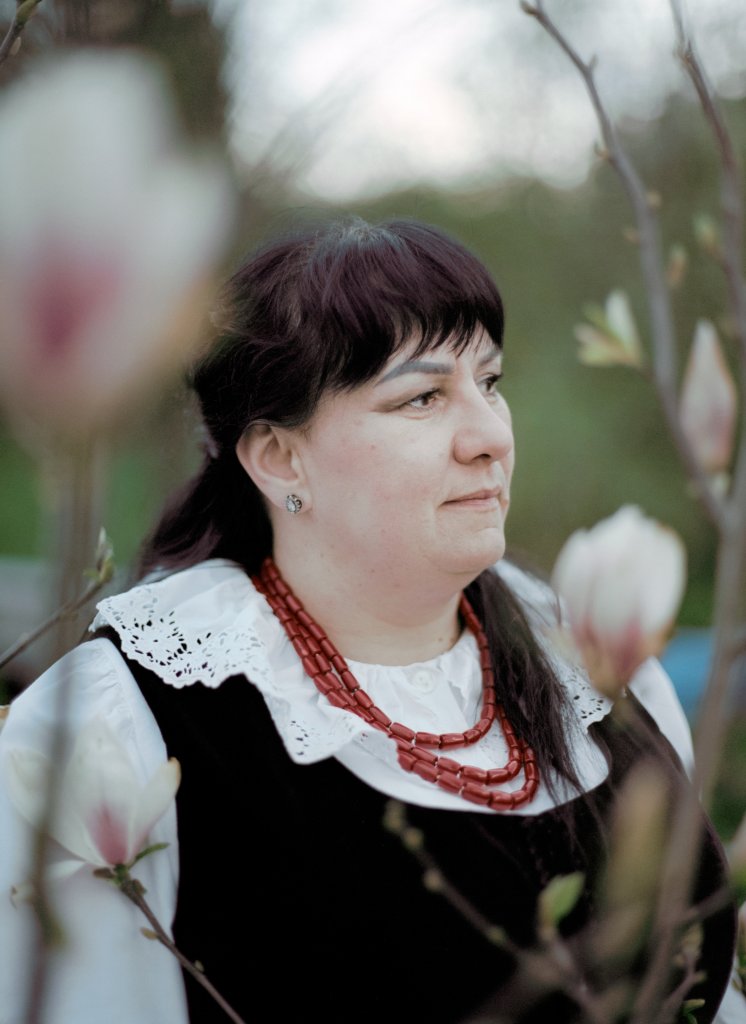
Beata Chmielowska, Frywałd
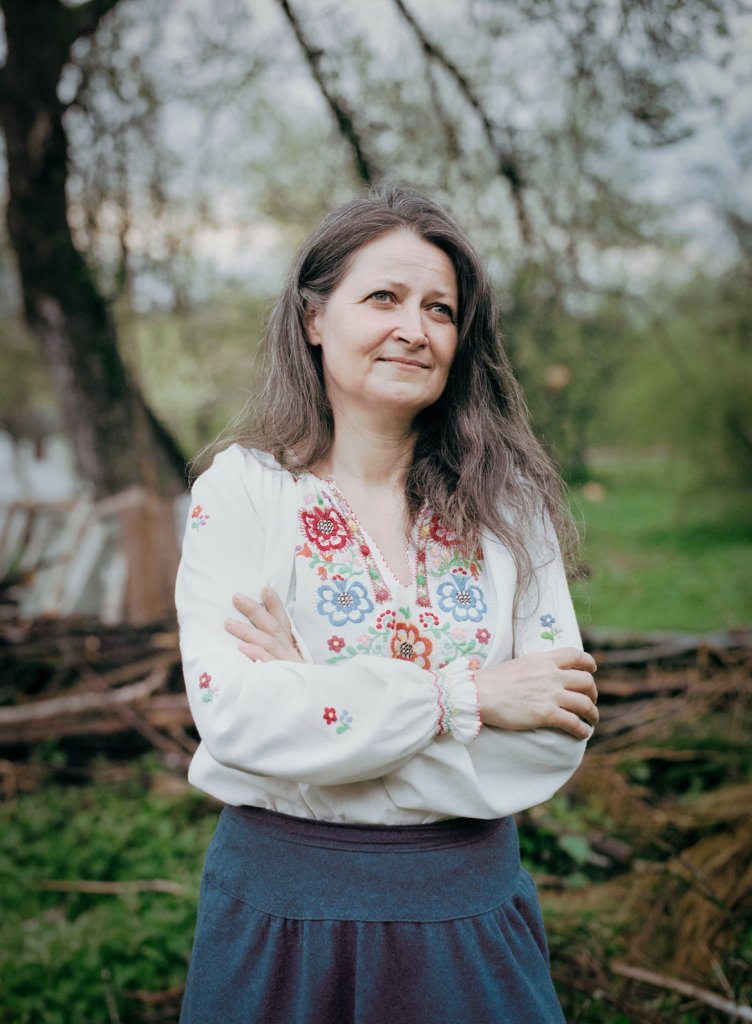
Lucyna Przybycień, Biecz
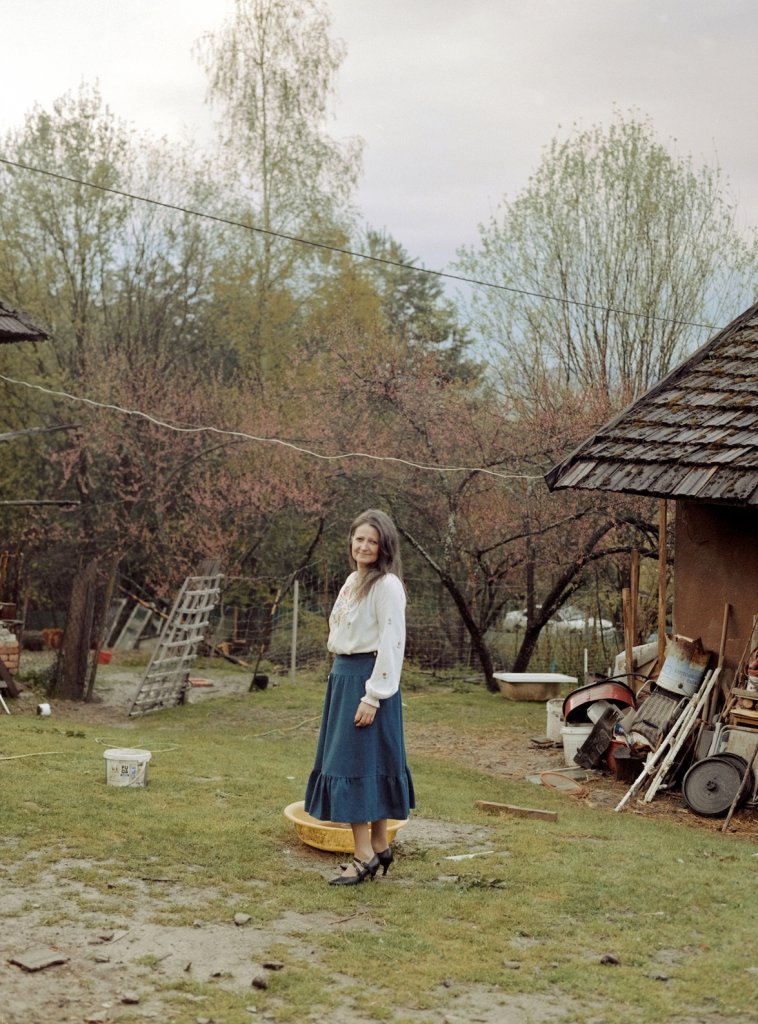
She gets angry when she walks in the forest and comes across bags full of rubbish. And she gets sad when seeing children throwing ice cream wrappers behind them without anyone telling them not to. She is more and more worried about the local ‘szafranki’, as the crocuses are called here, which used to carpet entire surrounding meadows, but now only bloom in a few places. This is the northernmost site of their occurrence. ‘No one grazes animals or mows the lawn anymore, and that doesn’t help ‘szafranki’. They’ve always lived side by side with people’ she says. ‘Today, instead of helping them, we dump rubbish on them.’
Despite the obligatory fees and the introduced segregation of waste, it’s still being dumped in the forest. ‘Sometimes it’s done by people working in the city or tourists. But you can’t blame everything on them. There was a time when there were no rubbish dumps, so the unwanted waste was taken to the end of the village, over the hill, into a ditch or to the edge of the forest. Although those days are gone, some people still do it out of habit or lack of imagination,’ she says and sighs. ‘I cannot understand this.’
Lucyna Przybycień does not understand either. She is also annoyed by the rubbish she finds during every walk to the forest. It is not far away, her house is situated on a gentle slope overlooking the mountain range of Brzanka and is only a dozen or so steps away from the forest wall.
She came to Belna (today, it is no longer a village but a part of Biecz) from Silesia a few years ago, although she comes from a village in the Podkarpacie region. ‘I lived in the city for a long time, but I felt I missed the life I remembered from my childhood. To be close to the land, forest, plants and animals.’
The house she bought with their partner is an old cottage, probably from the beginnings of the 20th century. There are two dogs running around the yard, lots of hens, a goose and two adult geese. One of them is trying to cover the young with its wings, they are still balancing awkwardly on their bodies. The strong May sun is shining.
– ‘What we are doing here is permaculture. A way of being in space that involves a balance between people and other parts of nature. Our farm regulates itself: what we grow helps each one another, it’s based on synergy and care.’
Just like the corn that grows high and the climbing peas that wrap around its stalk, the two plants work together without harming each other. ‘For the insects not to eat the fruit, my work needs a bird or hedgehog that feeds on them. For them to have somewhere to live, trees are needed – one will find a home in the branches, the other in the leaves that fall in autumn, which I do not rake or burn. Everything is connected to each other in a tight web, if you break it somewhere, interfere, the rest will soon fall apart,’ says Lucyna Przybycień. – ‘Such farming is not a response to mass needs; we don’t pretend otherwise. The potatoes I grow need attention, time, for example in order to be well bedded. This kind of farming will never be more efficient nor cheaper. I know how much a kilo of potatoes costs at the discount store, and I can’t win with that price. And if you look around you, a lot of people think like that. Why bother, digging in the soil, watering and looking after them, if it’s not worth it?’ she asks, but rather rhetorically, because she immediately adds: ‘It’s not worth it, yes. But for me it is important and that is why I do it.’

Zofia Skwarło, Nawojowa
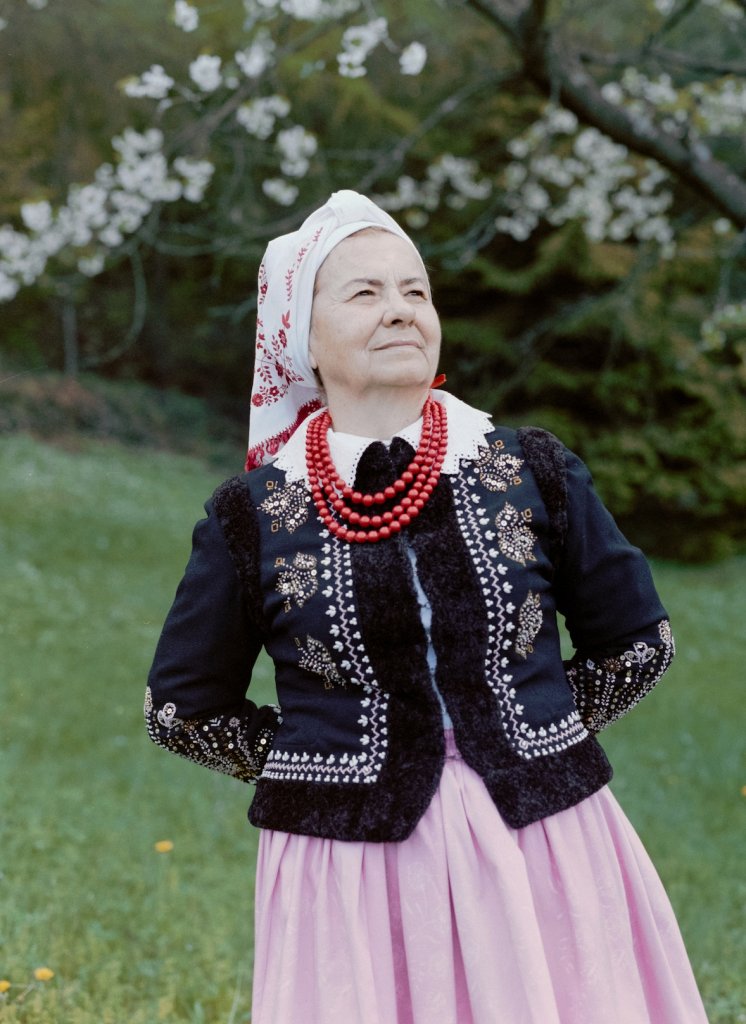
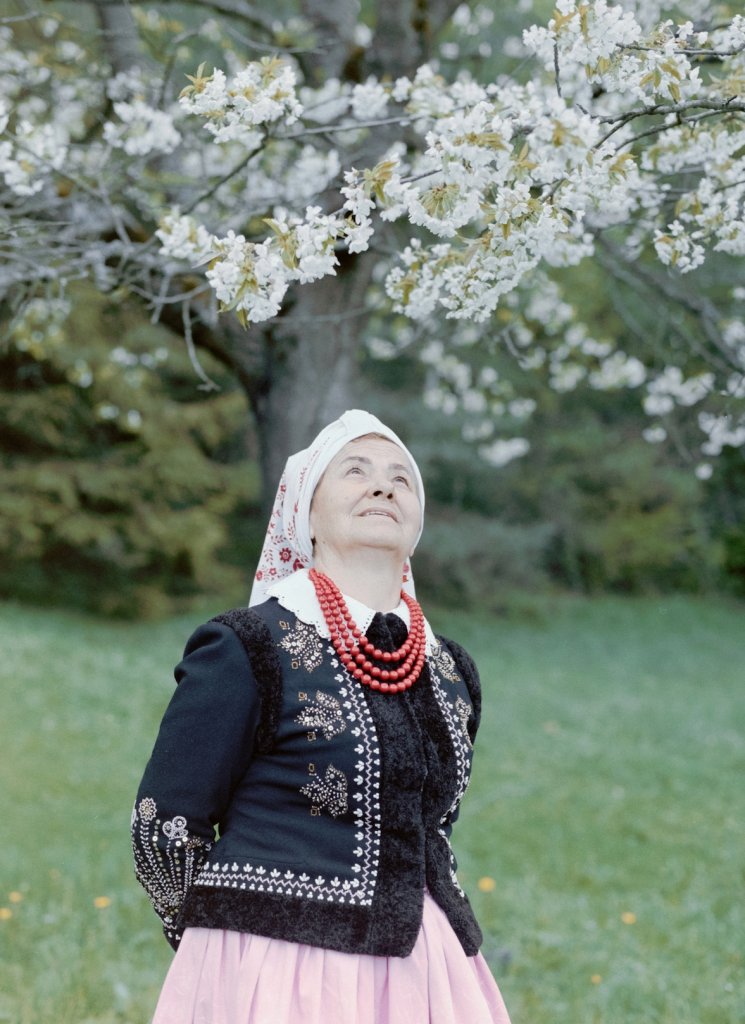
In the middle of the house, in the kitchen on the windowsill there is an aquarium (‘somebody didn’t need it anymore, put it out for waste, and here everything can come in handy’). She grows kodovan in it, an herb used in traditional Chinese medicine. ‘Bacopa, on the other hand, doesn’t want to grow, which is a pity, because it’s good for the memory.’
She also collects herbs and weeds and organizes workshops, where she is teaching others how to recognise them. ‘My medicine’ she says while showing us the plants under the tree in the meadow, ‘they grow all around. For the lunch I’m making, for example, pesto from goutweed and wild garlic, because now it’s their season. I like to know what this flower is, that weed. I’m learning that all the time. Now you can look it up by the leaf, on the Internet. It used to be only in the books and even before that people passed on this knowledge from generation to generation. That is why, one herb sometimes has several or a dozen names, depending on the colour or shape of the leaf or the disease it cured. Such as the goutweed, which was used to treat gout, elsewhere called goat’s foot, ger, maggot or silica.
She knows that sometimes her neighbours watch how and what she grows. However, she does not try to convince them with her methods. Because she herself also had to learn a new place. What she remembered from her childhood was successful in Podkarpacie, but not here, where she lives now. ‘The land teaches humility. What grows for my neighbour will never grow for me no matter how hard I work, because I’m a little lower down the slope. That is why, you have to listen to the earth. To observe how it reacts. And how it changes.
And it can change rapidly. A few days before our meeting, there was thick, wet snow on the trees surrounding the house. One of them broke, but fortunately the branches avoided the roof. The downpours followed by landslides also seem be more frequent than they used to be, although weather breakdowns are an inherent part of nature, not an invention of modernity.
However, the data shows that with modernity came their intensity. Six droughts were recorded in Poland between 1951 and 1981, three times as many (eighteen) happened between 1982 and 2011. They are happening more and more frequently; since 2013 there has not been a single year without a drought. The same is true for the intensity of other natural disasters, such as floods, storms, violent gales or hailstorms. These effects of climate catastrophe are known to rural residents. In a survey from 2017, albeit unrepresentative as it was conducted on a small group of local leaders, they identified the need for environmental policies that minimise the effects of extreme weather events as one of the challenges of the future.
For example, floods. The elected village leader Maria Bereta remembers the one from 1997 very well, when water literally flowed through the ground floor of her house in Lipnica Dolna (just next to Górna and Murowana), a village famous for its tall, several metres high Easter palms. Today, the riverbed of the lazily meandering Uszwica is perhaps a hundred metres from the kitchen where we are sitting.
From outside the window we can hear the cock crowing. ‘Because eggs have to be my own. What would it be like living in the countryside without your own hen? I can’t imagine not having a piece of land, my own vegetables, fruits. Although raspberries and blueberries are regularly destroyed by beavers, we still pick some every year.
The cake she puts on the plates is decorated with strawberries, like the famous local Easter palms with their tissue paper flowers. She apologises that although they are her own, they came from the freezer.
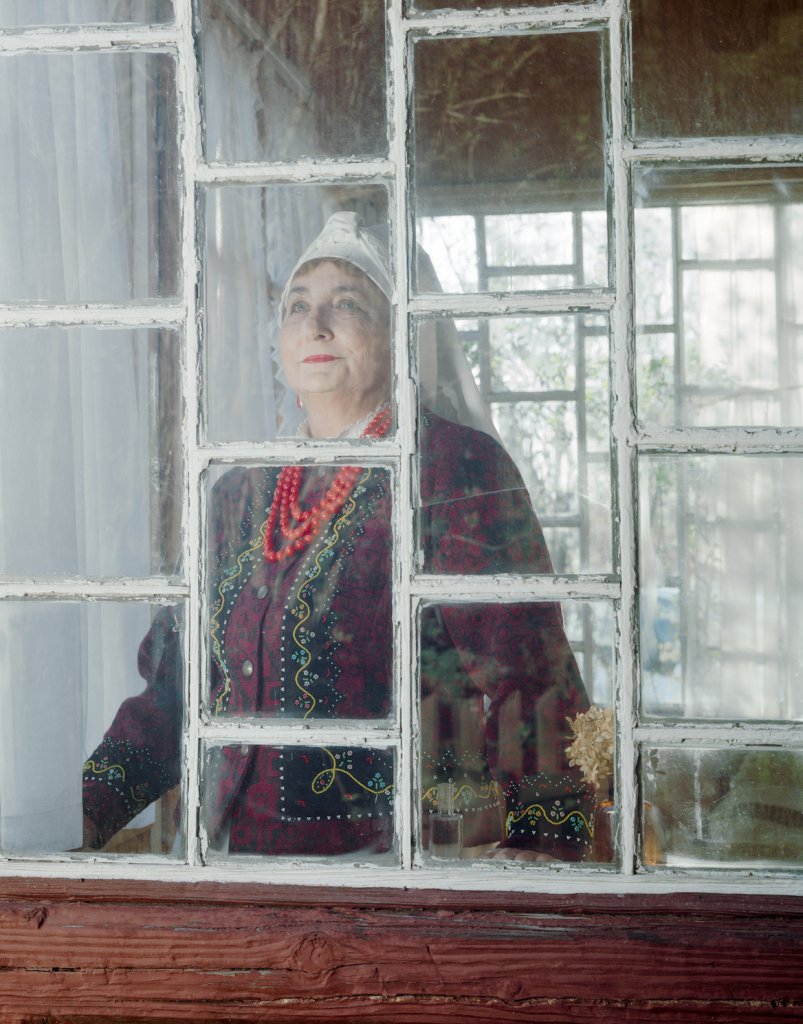
Lucyna Kmak, Ptaszkowa
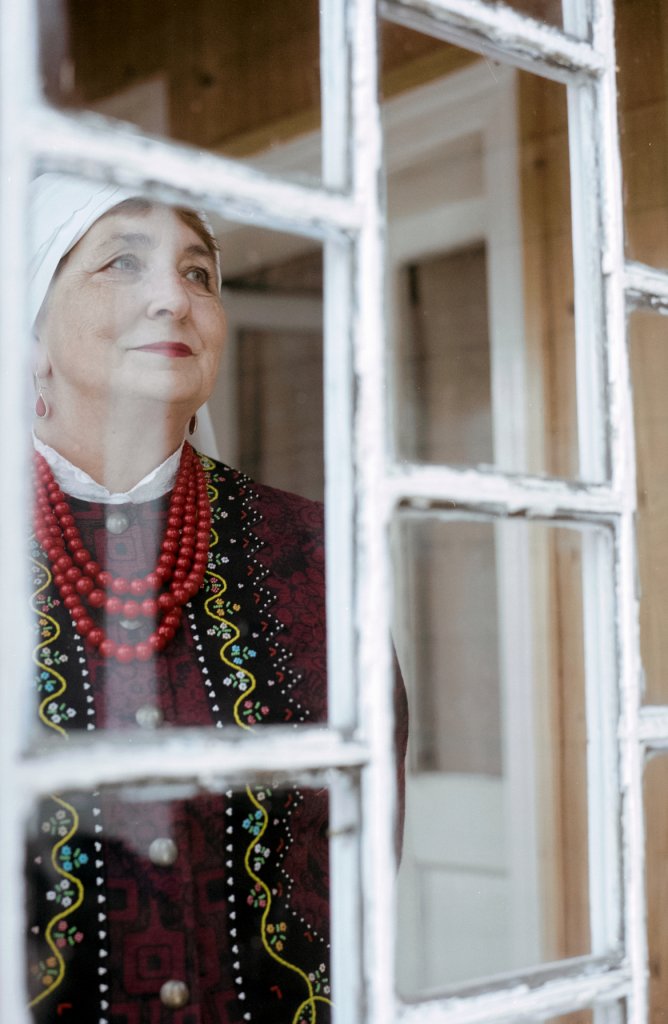
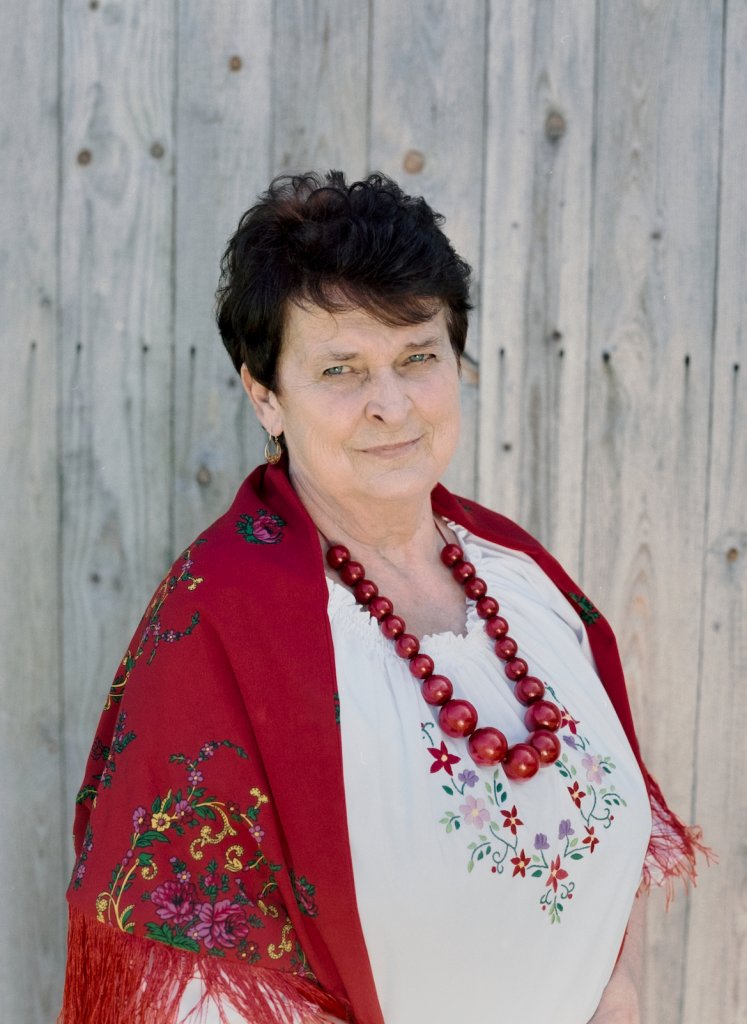
Maria Bereta, Lipnica Dolna
Nature, Maria Bereta believes, is a great friend. ‘If it wasn’t for human greed to get more and take more from it, maybe this pandemic wouldn’t have happened?’ she wonders. ‘Every farmer knows that if animals are crowded together, they get infected and there’s no way of stopping it. People have also crowded too much, so now they’re getting what their deserve. Nature will always claim its own. Oh, recently wolves have appeared in our village. The forests came to us, because we went too close the forest uninvited. Animals come to our homes, because they’re hungry, because we’ve exterminated what they used to feed on, we’ve cut down trees, and they used to be their home. When everyone locked themselves in the pandemic, they finally felt unthreatened.’
When she talks about Lipnica, where she has lived all her life, she proudly mentions the brick houses in the market square and the wooden St Leonard’s Church from the late 15th century, a UNESCO World Heritage Site. She recalls that when she was a child, forests grew where today there are fields and houses. Her village lies at the feet of the hills of Szpilówka range, which used to be thickly overgrown with beech trees and with ivy meandering in the undergrowth. Today only the northern slopes of the hills are forested, while from the south fields are climbing more and more courageously towards the tops.
‘But if you look around the villages, there is less and less farming. In order to be profitable, to be able to support a family from farming, you need to modernise. We need to lease or buy a lot of land, invest in equipment. Nowadays, everything is computerised and there is almost no need for human operators. Medium-sized farms have disappeared; nowadays someone either grows a little, for their own needs, or produces. That is why the rural landscape has changed. The folklore has also changed, because the things we sing about in the Rural Wives’ Circle, the words of the songs, are a foreign language to my grandchildren. They no longer know what a harvest festival or a horse mill is. Nor do they know when the earth is resting, that you do nothing during the new or full moon. This cycle used to be in your blood, you didn’t have to look at the calendar to know what and when to plant, when to start the harvest. We used to go to the fields early in the morning to get as much done as possible before the noon, so that the horses could rest during the hottest hours. As a little girl myself, I used to follow the cart and tie the hay into bundles [fifteen sheaves – editor’s note]. The Summers were short, but hot, and we used to swim in the Uszwica and how clean it was, like crystal, unlike now! There were plenty of crayfish, and now there aren’t even any frogs.’

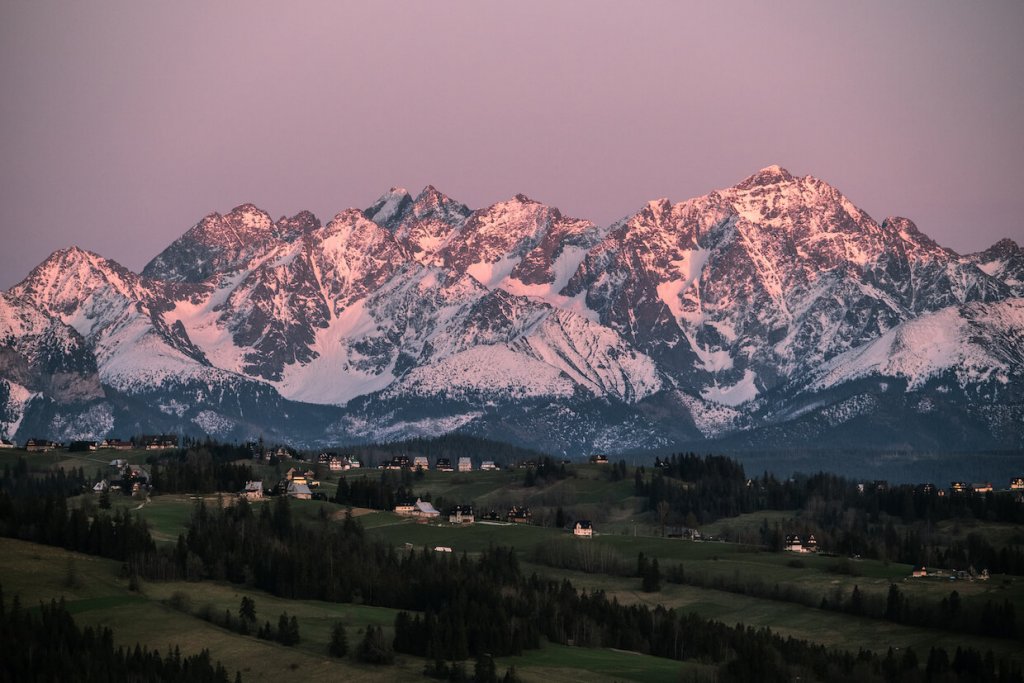
‘But the winters were long, with frosts of twenty or thirty degrees,’ she adds and sighs. ‘I don’t know, maybe it’s a good thing, because farming is hard, and with all that’s going on with the climate, you can’t be sure of anything. We know after the floods that insurance is important. But we also know that some things are lost irretrievably in a disaster and cannot be rebuilt or reconstructed with any money,’ she says and packs us two kilograms of cake for the road.
‘No one,’ she stresses in an unobjectionable tone leaves her empty-handed. ‘When I’m in the office, I always take a supply of rubbish bags, so that if someone comes to do an errand and doesn’t have any, they can take one. Or when I go to collect taxes from residents, I also take them with me, just in case. I guess that’s environmental education too, helping others to take care of the environment?’ she asks. ‘For example, children are taught from an early age in schools and everywhere about segregating waste, so you can’t just walk away and say you don’t know. There’s plenty of information, you just need to reach out. Let me put it this way: everyone tends to keep their own garden nice and their fence straight. It’s worse in places where no one cares. But I repeat, you have to set an example. When the level of water rose in the Uszwica river and we organized a big cleaning in order to get rid of the curtains of rubbish on the banks, I also went and collected those foils and plastic bottles from the water, and I didn’t lose my head.’
– You have to explain everything with your own example, to encourage, not oppose everyone by giving orders,’ repeats Maria Bereta as she’s saying goodbye to us, adding a bundle of sausage to a bag for the journey. ‘Not everyone was convinced that a woman was suitable to be an elected chair, how come “a woman in a skirt will govern us?”, people were saying. But, as you can see, I have been managing for twenty-seven years. You can convince and persuade, but nothing works as well as doing your job and showing what kind of person you are with your own actions. And I like to do things not only for myself,’ she says, and in order to prove it she shows the prepared materials: reports on her activities, cut-outs from the local press, diplomas, thank you cards for cooperation, help, support… ‘That’s how it was with the sewage treatment plant. I went around saying it was a necessary investment, so I couldn’t complain that they put it right under our noses. Sometimes the smell is bad, but then we ventilate. I couldn’t put it in front of other people’s windows, if I encouraged them to do it myself. You have to work hard for the common good.
During the time of her cadency the governor has changed three times, and the chairman of the municipal council even more often. When she was first elected in 1994, there were three other female chairs in the whole district. ‘Today we are not strangers anymore, women are eager to change the village, they are younger than me, they have ideas, I envy their energy and opportunities they have now, nothing but to write applications for funding and do their job,’ she says.
Research confirms that women in rural areas are more socially active than men. They are participating in Landladies’ Circles (Koło Gospodyń Wiejskich) and local associations. They are more and more active in the local governments, they make up a quarter of all members of village councils and in some voivodeships there are as many female as male governors. When they write applications for EU funds, they call themselves the „leaders of change”.
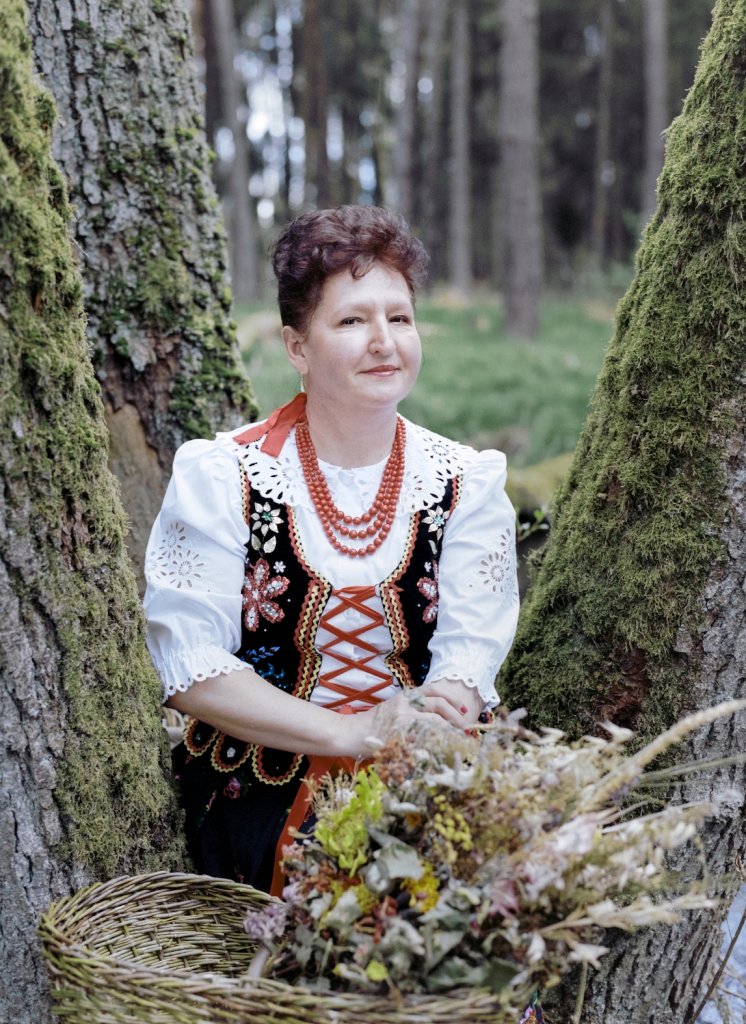
Józefa Bałys, Mętków

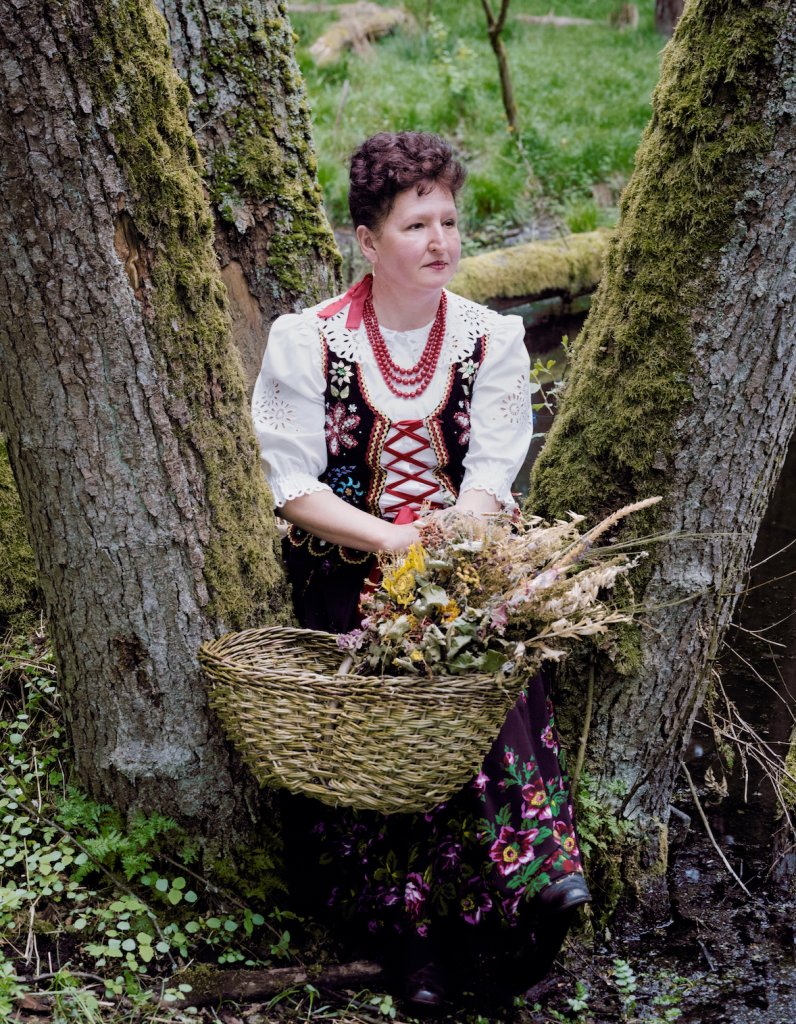
However, Joanna Kurtyka, a housewife from Brzeźnica, admits that transferring role models is not always easy. ‘Young people furnish the world in their own way and this is the natural order of things. I myself regret not listening to the stories told by my elders. You always had something more important to do, and you would just wave your hand at stories told by your grandma or grandpa: „what does he know”.
That’s also why she writes down the words that pass away with the elders. Like „tragacz”, a kind of wheelbarrow, once used on every farm, today a completely forgotten piece of equipment. Like „rzepiorze”, a nickname for the inhabitants of a neighbouring village, after the turnips they grew. She collects stories and songs about the old Brzeźnica. And recipes, like grandma’s „pumpkin marmalade”. ‘The food we ate used to be simple. Meat? Only on special occasions. Where else would you ever see meat on your plate! Animals worked on the farm, they were not slaughtered except for trade, but only by the richer farmers. Every day we have dumplings, noodles, our local specialities: zimiocorza – a potato pancake from a baking tin, barley groats with plums.’
What has been disappearing since the village began to change, Kurtyka tries to preserve in her poems. ‘Sometimes it seems to me that although we live closer to nature here, in reality we are paradoxically farther from it than people living in cities. When we gave up farming, we completely separated ourselves from nature. We took it for granted, but when we’re not immersed in it every day, we can’t see its manifestations. If I no longer go out into the field, I do not know what is growing in the ground, what bird is nesting in a tree in the middle of the field, what weed is flowering in the meadow when I drive the cows into the barn. I am not saying that we should all stay in the past, because then we would be an open-air museum and not a real village, but this complete turning our backs on the land has taken a lot away from us.’
We heard about similar loss more than once on this trip. It reappeared repeatedly in the story of climate change from an out-of-town perspective. And it was just as elusive, because it was coming out of an ideal that, though it never really existed, had left traces in the lives of each of our interviewees. Clear and fresh, as if they were made yesterday, not twenty or eighty years ago.
Wanda Szado-Kudasikowa, poetess from Podhale: ‘I miss the snow staying until mid-June and the cold days in May like this year. The Swiss pines forests. The blue of the fields, which on days in July stretched up to the horizon, so it merged with the sky. Where did this blue come from, this blue field? Have you seen how flax blooms? Well, you will not even be able to miss it anymore.’
The text and photographs are a part of the ‘Do you know how flax blooms?’ project created by ‘Pismo’ with Purpose Climate Lab. The main part is an exhibition of the portraits depicting our heroins – the leaders of local villages of Małopolskie voivodeship. It will be showcased in Warsaw and Cracow. For more information click here: magazynpismo.pl/krok-za-natura.

